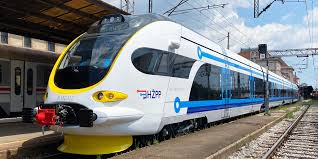
Why Is Railway Equipment at the Heart of Modern Infrastructure?
Share
The global railway industry is undergoing a massive transformation, and at its core lies the advancement in railway equipment. From manufacturing investments to warehouse expansions, and from electrification initiatives to managing breakdowns—every element is shaping the efficiency, safety, and sustainability of rail networks. Let us explore these changes through five pressing questions.
Download Your Free Sample Here
1. What Role Does ABB’s Virginia Facility Play in Strengthening Rail Equipment Manufacturing?
ABB has officially opened a new manufacturing, distribution, and repair facility in Mechanicsville, Virginia, to strengthen its Motion Traction business. This division specializes in delivering high-performance solutions for passenger railcars and e-mobility commercial vehicles. Its product lineup ranges from individual components to fully integrated traction systems, including compact converters, auxiliary converters, battery chargers, energy storage systems, and comprehensive service and retrofit offerings.
The newly launched facility is outfitted with advanced manufacturing technologies to support the production of converters and batteries for both the rail and transportation sectors, along with electric off-road equipment used in mining and electric buses. Representing a $6 million investment, the centre spans over 65,000 square feet and is projected to create nearly 100 skilled jobs at full operational capacity.
2. How Is ABB Supporting Rail Electrification in Europe?
As part of the project being executed through a joint venture between Elecnor and Inabensa, ABB will be responsible for designing and delivering 25-kilovolt equipment packages for six 110/25kV traction substations, eight autotransformer stations, and three sectioning posts
Marking its first deployment of traction switchgear technology in Lithuania, ABB will also supply six custom-designed versions of its structure-mounted outdoor switchgear (SMOS). These units, assembled and pre-tested at ABB’s facility, are built to fit within a standard gauge, which streamlines transport and significantly shortens installation and commissioning timelines—allowing for simultaneous work across multiple sites.
3. Why Is Hyundai Rotem Electric Expanding Its Equipment Warehousing in the U.S.?
The newly established facility at 2078 Rustin Avenue spans 44,609 square feet and plays a key role in supporting Hyundai’s expansion plans. Designed with modern infrastructure in mind, the building boasts 30-foot clear ceiling heights, five dock-high loading bays, and one ground-level access point.
Hyundai Rotem’s Smart Electric Group specializes in the production of high-speed trains, locomotives, and trams, which are pivotal to the evolution of urban mobility and the advancement of infrastructure worldwide.
Strategically located in Riverside, the facility reflects Hyundai’s dedication to operational efficiency and environmental responsibility. The new warehouse is set to optimize logistics and will act as a central hub in the company’s roadmap for sustained growth.
Next Steps: What Can Rail Industry Stakeholders Do?
Here are five actions that can help industry players stay ahead in the evolving railway equipment landscape:
- Invest in domestic production capabilities to reduce lead times and improve supply reliability.
- Expand warehouse networks to strengthen regional service support and spare part access.
- Adopt predictive maintenance systems to identify and fix equipment issues before failure.
- Collaborate with technology leaders like ABB for scalable electrification solutions.
- Incorporate automation into manufacturing and repair operations to ensure consistent quality.
Railway equipment is no longer just about metal and mechanics—it is becoming smarter, more responsive, and more strategic than ever. With companies like ABB and Hyundai Rotem making substantial moves in manufacturing, electrification, and warehousing, the rail industry is on track to meet future transit demands with reliability and efficiency.